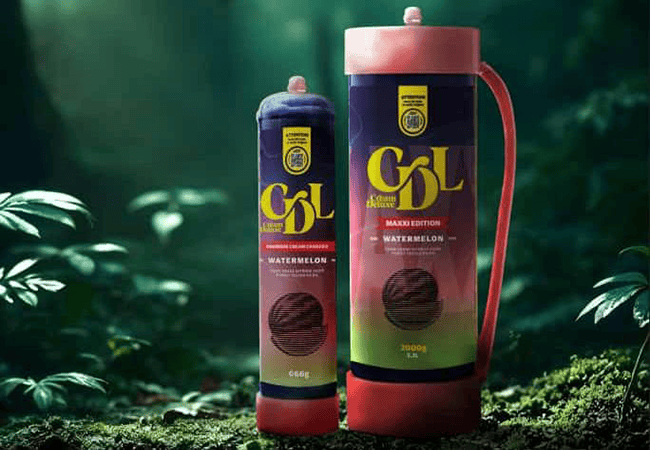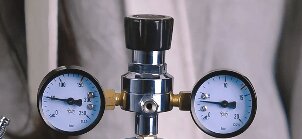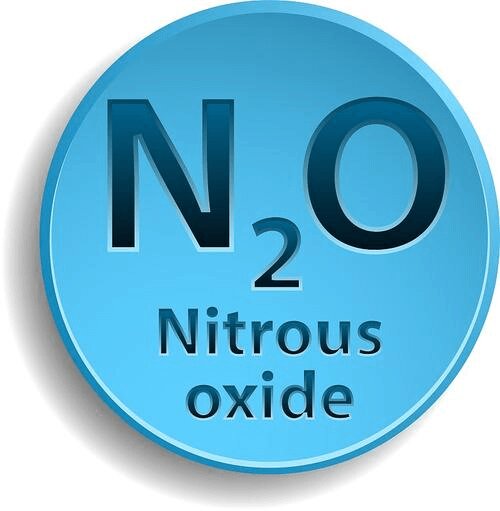задвижван от PiQR.io
задвижван от PiQR.io


Случвало ли ви се е качеството на продукта ви да бъде повлияно от зарядното устройство за крем, което сте използвали? Едно малко зарядно устройство може да промени изцяло вкуса и ефективността на вашия ресторант или десертна сладкарница. Изборът на правилното е от решаващо значение.
Когато купувате зарядни устройства за крем в насипно състояние, цената е важна, но знаете ли наистина как да изберете правилния продукт? Всеки детайл може да окаже влияние върху работата ви - от материала до съвместимостта с газ.
Това ръководство ще ви запознае с ключовите фактори, които трябва да вземете предвид, когато купувате на едро, и ще ви помогне да вземете информирани решения, които ще подобрят ефективността и качеството на вашия бизнес.
Функционалната система за зареждане на кремове се състои от няколко взаимозависими компонента:

Купуването на канички за крем и зарядни устройства на едро предлага осезаеми ползи за търговските операции:
| Полза | Обяснение |
| Ефективност на разходите | Доставчиците предлагат отстъпки за големи поръчки, което значително намалява разходите за единица продукт. Например, отстъпка от 10% за поръчка от 1000 единици може да спести стотици долари годишно. |
| Оперативна ефикасност | По-малко цикли на пренареждане означават по-малко административна работа и по-малък риск от изчерпване на наличностите по време на пиковите периоди. |
| Стабилност на инвентара | Покупките на едро позволяват постоянни нива на запасите, като се съобразяват с производствените прогнози и се свеждат до минимум прекъсванията на веригата за доставки. |
Плюсове: Устойчиви на корозия, хигиенични и издръжливи за дългосрочна употреба.
Недостатъци: Малко по-тежък от алуминия, но идеален за изискванията за висока чистота.
Плюсове: Леки и икономични, с добра топлопроводимост.
Недостатъци: Необходими са повърхностни покрития, отговарящи на изискванията на FDA, за да се предотврати окисляването и отмиването на метали.
Изберете размера на контейнера в зависимост от ежедневната употреба на крема:
| Вид бизнес | Препоръчителен капацитет | Предимства |
| Малки кафенета/магазини за десерти | 0,5L-1L | Лесен за употреба, намалява отпадъците |
| Средни ресторанти | 1L-2,5L | Балансира преносимостта с нуждите от умерена мощност. |
| Големи пекарни/Кетъринг | 3.3L | Ефективност с голям обем; намалява честотата на зареждане. |
За големи пекарни и кетъринг услуги зарядното устройство за крем Cream Deluxe с обем 3,3 л е идеалният избор. Изработено от неръждаема стомана за хранително-вкусовата промишленост, то гарантира чистотата на крема, предлага отлична устойчивост на налягане и е проектирано да отговаря на нуждите на високочестотното производство с големи обеми, като намалява честотата на подмяна и повишава ефективността.

Изисквания, които не подлежат на обсъждане, за търговска употреба:
Използвайте този контролен списък, за да оцените потенциалните доставчици:
Проверка на цилиндъра: Преди употреба проверете дали цилиндърът е цял и дали няма пукнатини или повреди.
Температура на околната среда: Поддържайте работната среда между 10 и 30°C, за да предотвратите влиянието на екстремните температури върху налягането на газа.
Контрол на пълненето с газ: Не превишавайте максималния капацитет на бутилката, за да избегнете презареждане и потенциални опасности.
Избягване на сътресения: По време на транспортиране или използване дръжте бутилката в изправено положение и избягвайте силни удари.
Почистване: Избършете външната част със суха кърпа и избягвайте използването на агресивни почистващи препарати.
Контролни уплътнения: Редовно проверявайте уплътнителните пръстени на цилиндъра и ги подменяйте, ако са износени или повредени.
Проверка на налягането на газа: Уверете се, че налягането на газа в бутилката е подходящо, като избягвате високо и ниско налягане.
Съхранение: Съхранявайте на хладно и сухо място, далеч от пряка слънчева светлина.
| Издание | Причина | Решение |
| Изтичане на газ | Разхлабени връзки, износени уплътнения | Затегнете връзките, сменете уплътненията |
| Ниско налягане | Недостатъчно запълване с газ | Напълнете отново газта и проверете състоянието на бутилката |
| Неравномерен газов поток | Запушен клапан или дюза | Почистете клапана и дюзата |
Следвайте насоките за работа: Уверете се, че използвате подходящи зарядни устройства и спазвайте инструкциите на производителя.
Избягване на високи температури: Пазете от огън и високотемпературна среда, за да предотвратите изтичане на газ или експлозия.
Редовни проверки: Уверете се, че оборудването е в добро състояние, и при необходимост заменете износените части.
Закупуването на зарядни устройства за кремове на едро изисква балансиране на качеството, цената и безопасността, като същевременно се гарантира дългосрочна производителност. Чрез правилна оценка на компонентите на системата и доставчиците можете лесно да изберете най-подходящия продукт за вашите нужди.
Готови ли сте да обновите оборудването си за зареждане на кремове? Посетете Cream Deluxe за експертни съвети и персонализирани оферти, които да помогнат на бизнеса ви да работи по-ефективно!
| Бисквитки | Продължителност | Описание |
|---|---|---|
| cookielawinfo-checkbox-analytics | 11 месеца | Тази бисквитка се задава от приставката за съгласие за бисквитките на GDPR. Бисквитката се използва за съхраняване на съгласието на потребителя за бисквитките в категорията "Анализ". |
| cookielawinfo-checkbox-functional | 11 месеца | Бисквитката се задава от GDPR за съгласие с бисквитките, за да се запише съгласието на потребителя за бисквитките в категорията "Функционални". |
| cookielawinfo-checkbox-necessary | 11 месеца | Тази бисквитка се задава от приставката за съгласие за бисквитките на GDPR. Бисквитката се използва за съхраняване на съгласието на потребителя за бисквитките от категория "Необходими". |
| cookielawinfo-checkbox-others | 11 месеца | Тази бисквитка се задава от приставката за съгласие за бисквитките на GDPR. Бисквитката се използва за съхраняване на съгласието на потребителя за бисквитките от категорията "Други". |
| cookielawinfo-checkbox-others | 11 месеца | Тази бисквитка се задава от приставката за съгласие за бисквитките на GDPR. Бисквитката се използва за съхраняване на съгласието на потребителя за бисквитките от категорията "Други". |
| cookielawinfo-checkbox-performance | 11 месеца | Тази бисквитка се задава от приставката за съгласие за бисквитките на GDPR. Бисквитката се използва за съхраняване на съгласието на потребителя за бисквитките от категория "Производителност". |
| viewed_cookie_policy | 11 месеца | Бисквитката се задава от плъгина за съгласие за бисквитки по GDPR и се използва за съхраняване на информация дали потребителят е дал съгласието си за използване на бисквитки. Тя не съхранява никакви лични данни. |